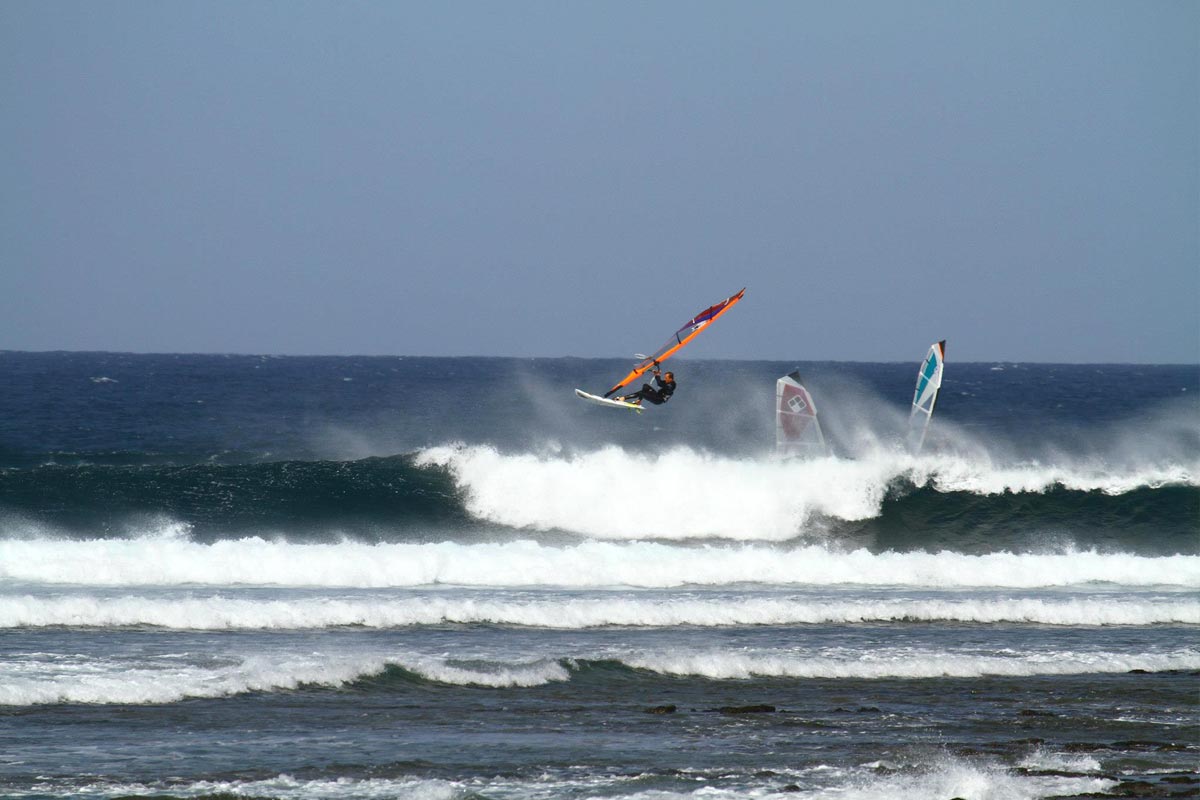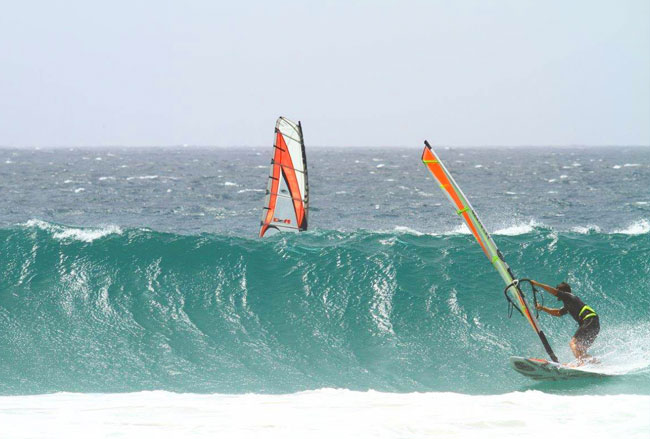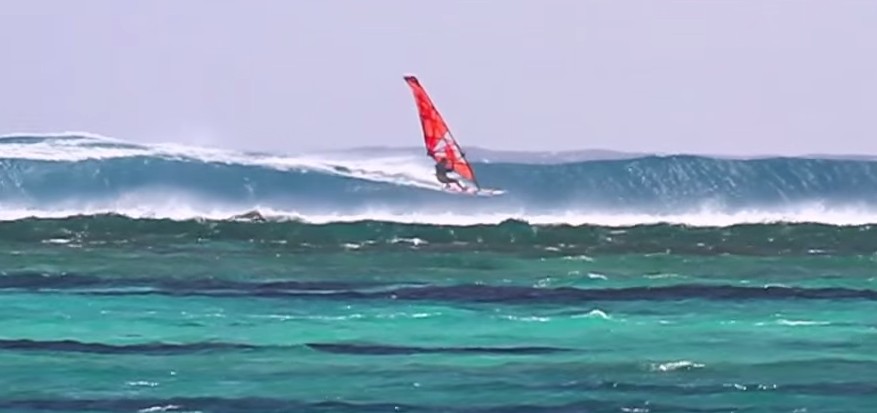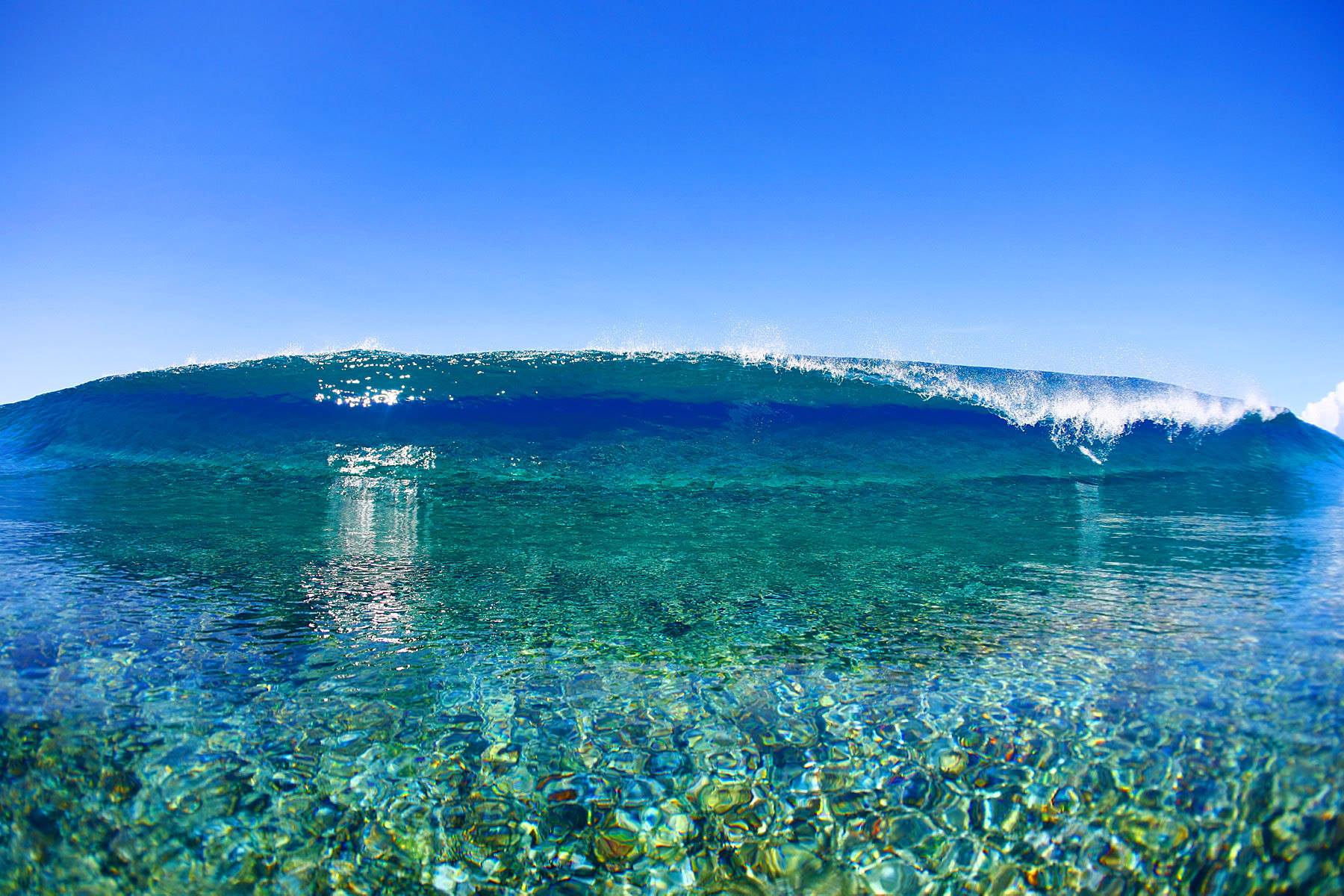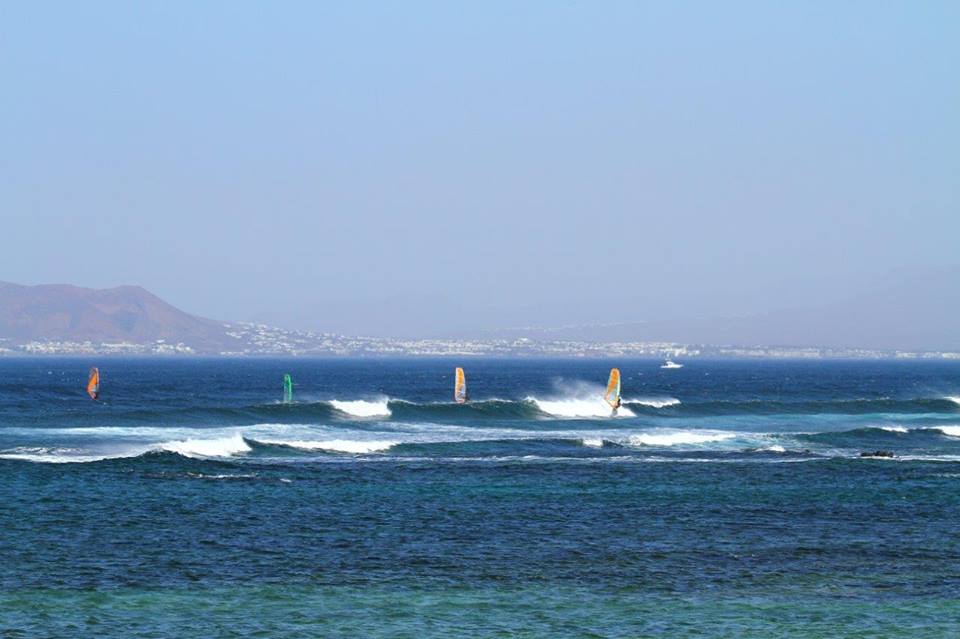If you’re a wave sailor then you obviously have a love for riding waves – the clue’s in the name. But what type of surf break you sail at can be a factor, and how you approach things, across all your riding. Here on Fuerteventura, where Witchcraft is based, it’s mainly reefs that tend to be sailed – although some beaches are available too. So what are the differences?
Although it’s hard to categorise each spot accordingly, as local anomalies, bathymetry and other factors can influence the way a wave breaks, there are certain traits which allow us to categorise in general fashion.
Beach breaks
A beach break is essentially a wave spot where the surf breaks on top of sand. For many sailors this can be the preferred type of wave sailing arena as beaches are perceived to be friendlier – although this is isn’t always the case.
When most think of beaches they picture a gently shelving stretch of sand where waves roll in from a long way out. As the swell’s pulse of energy hits the shallows the bottom drops out and the wave trips over itself, the head throwing forwards and creating the breaking part of the wave.
In many cases a beach break will have numerous peaks to choose from. The downside is take off points can move and change as the sandy seabed is shifted by oceanic energy. Tide can also be a factor in terms of sand deposits meaning no two sailing sessions are ever quite the same.
Some beach breaks can be offer soft(er) sandy bottoms while others can be hard packed. Many sailors consider reefs to be hazardous to health when actually a hard breaking packed sand beach can be far more brutal. At some locations waves fire straight in from deep water and unload ferociously. This may be a sand bottomed launch but it’ll still snap masts, and in some cases bodies! Take Puerto Escondido (Mexico) or Cotillo on Fuerte as cases in point. Also when waves are bigger, they often close out.
Another thing to watch out for are rips. Rips at beach breaks form either side of sand banks where the main point of wave energy is focused. In simple terms waves rush in before that expelled energy finds the path of least resistance to head back out to sea. Channels forge and can be used by experienced riders to get outside and avoid the majority of white water. You do get long shore drift occurring (current flowing along the shore) in some areas as well and flash rips can materialise and disperse in the blink of an eye.
Reef breaks
In contrast to beach breaks reef set ups describe surf spots whereby waves break over the top of rocks. These rocks can be flat bed in nature or more undulating with peaks and troughs. The nature of the coastline, to some extent, dictates what type of reef you’ll get. In Fuerte, for instance, reef breaks are created from solidified volcanic lava (magma) over thousands of years. With Fuerte being relatively low lying, especially along the north shore, it slopes down much more gently into the ocean compared to the other Canary Islands. Its irregular coastline, with jutting fingers of reef and bays, create classic point breaks with channels in between. This means all around the coast there’s pretty much a spot for any wind direction. Such sloping reefs tend to pick up a lot more swell as well. If you compare this with Scotland, for instance, reefs in that part of the world are flatter and more slab like, granite rock having been carved by storms and swells over the years. There are other types of reef break also, depending on where you are in the world. Coral tends to grow just below the surface so reefs like this tend to boast hollow, powerful waves which break over shallow, razor sharp and live sea beds – One Eye, Mauritius, or Gnaraloo, Australia, are famous examples. Cutting yourself can lead to bad infections. Other coral reefs have died, are filled with sand or lie deeper below the surface and provide for a more user friendly set up.
Waves breaking on solid matter are generally more predictable. Sometimes the tide does affect things, as does wave size. Generally though reef waves break in the same place, making it easier to read for the wave sailor. Reef breaks often provide longer rides. The wave starts breaking at one point and from there it peels until you gybe off into the channel. This also means you can calculate risk much more easily. The deeper you enter the wave the more powerful it is – great for aerials. If you stay downwind of the peak you can simply carve around on the shoulder like waterskiing against a steep wall and you will not get drilled even if you do fall.
In many cases there is also a defined channel that can be used to get out, which can make things a lot easier if it is lighter or bigger. On Fuerte we have 12 reef breaks with a channel downwind, one reef break without a channel and 3 beach breaks. The set up at Maui’s world famous Ho’okipa can be a lot more awkward with large waves in the mix and the wind is usually very gusty and light on the inside due to the cliffs upwind. What once was an easy access point suddenly becomes a frothing mass of white water. An efficient chicken gybe is a good skill to have on bigger days here!
As with beach breaks rips can form and take the path of least resistance. At a reef point, for instance, water flows parallel to the coastline meaning riders will be dragged away from the impact zone into deeper water. So the risk of actually coming in contact with the reef is quite low. This flow can also be dictated by wave size and tide.
One of the most problematic issues with reef breaks versus beaches though is launching and landing. Once out on the water most seasoned sailors would cope fine, even with bigger sized waves. How easy the launch is depends on each individual spot and also the tide. At some spots you have a beach with no or little waves to launch from, as easy as it gets. Even if you need to launch from rocks, most spots will have a corner with hardly any waves. The biggest risk here is to slip and ding your board. Glass Beach has a dead easy launch from a beach without waves or rip but the waves break closer to the reef and if you get drilled closer in (when waves are small) or more upwind and you let go of your equipment, it may end up on the rocks. If you manage to hang on the rip will take you to the channel.
At most spots it is up to the sailor how much risk he/she takes. If you charge hard and go for big fat lips, dinging boards, ripping sails and putting holes in skin (especially feet) can be a common occurrence when sailing at reefs – one reason Witchcraft windsurfing gear is built to withstand all manner of knocks and beatings. Also some sailors fear hitting the bottom at rocky spots. While this is a consideration riders should be aware they can end up being punished just as hard at beach breaks – in some cases more so! Another advantage reef breaks may have is clear water so you can see what is underneath and how deep. Also from a distance you can often assess depth by the waves, a rule of thumb being that when a wave breaks with normal power, the height of the wave is similar to the depth underneath. Also when coming in on a wave, where it is bubbling in between sets, there can be rocks underneath. The wave following you may jack up and break at this spot so better extend your bottom turn a bit, around the hollow section, and hit it further downwind. Hard chargers instead will figure this spot out quickly and use it for aerials or big smacks.
As we said at the start of this article the differences between reef and beaches can be generalised as each set up will have its own unique traits. If you’re new to any spot it’s worth taking time to assess what’s going on, how the locals do things and get some advice. Most windsurfers are a friendly bunch and will be happy to help. Learn about each spot and you should be fine – knowledge is power after all.
